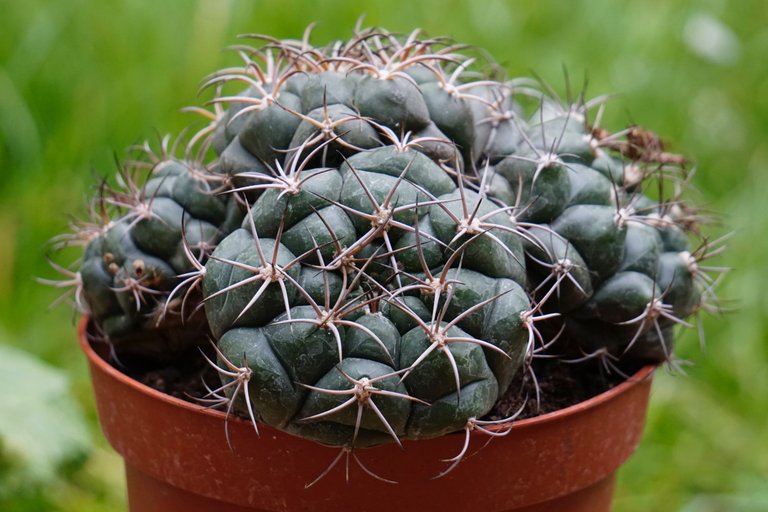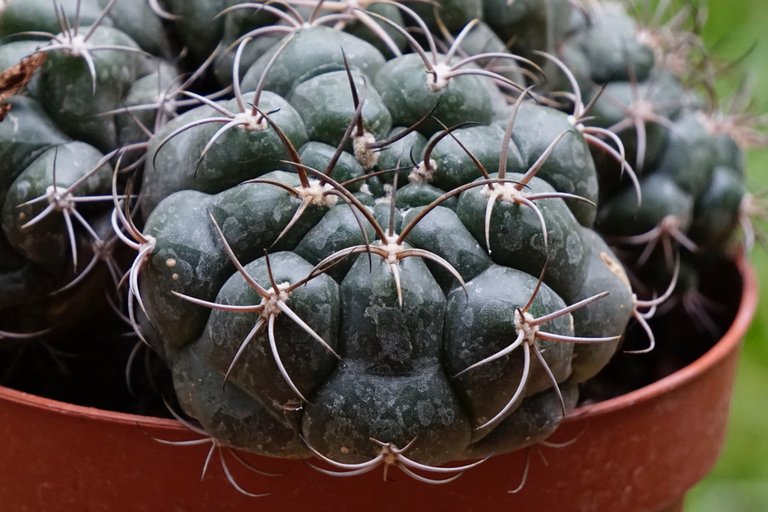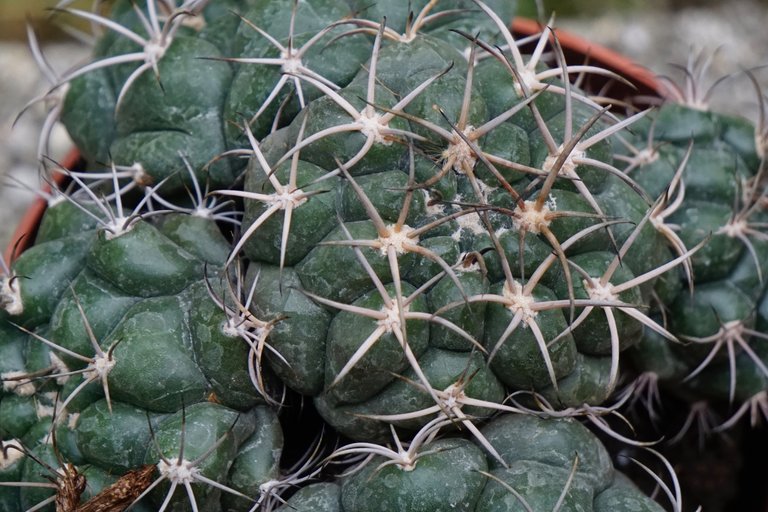Hey dear community, at the beginning I would like to welcome you all to my new post and hope you had a day that was full of positive experiences! In this post, I would like to talk a little about nature and hope you are able to expand your knowledge.
Here you can see pictures of a chin cactus which is also known under the scientific name Gymnocalycium and among the best-known characteristics are the plant body which is somewhat reminiscent of a sphere and the genus originally comes from the southern part of America. In its areas of origin, it grows mainly in hot or dry areas, but can be found mostly in partial shade and too much sun can become a problem for this cactus and in general, it can be considered very resistant and it is extremely rarely infested by pests and this genus includes numerous species, some of which even have good resistance to cold. It is widespread in many different places in South America and you can find it in Argentina, Chile, Bolivia or Paraguay and the first traces in Europe appear during the 19th century where it had quickly enjoyed increasing popularity and there it is very popular as a houseplant and some species can even be left outside in winter while others have to be wintered and here you should of course always inform yourself in advance and especially the species from Argentina have a particularly high tolerance to cold. When it comes to the right care, you should always water very sparingly and it is enough if you supply it with fertilizer every few weeks and already from about spring, chin cactus produce flowers which exist in different colors and can also be interesting from an ecological point of view and offer a good source of pollen and nectar for different types of insects. As with other species, the spines are a shield against predators in nature, but they are not quite as aggressive as with others and it can also be classified as friendly to pets and even when it comes to toxicity, you do not have to pay attention and not contain any toxic components.
Many thanks for the visit and I hope you could learn something new about nature! I captured these pictures with my Camera Sony Alpha 6000 plus 55-210 mm lens




Earlier I did not know anything about them, after reading your post, my knowledge has increased.
Happy to hear that @djbravo
#hive #posh